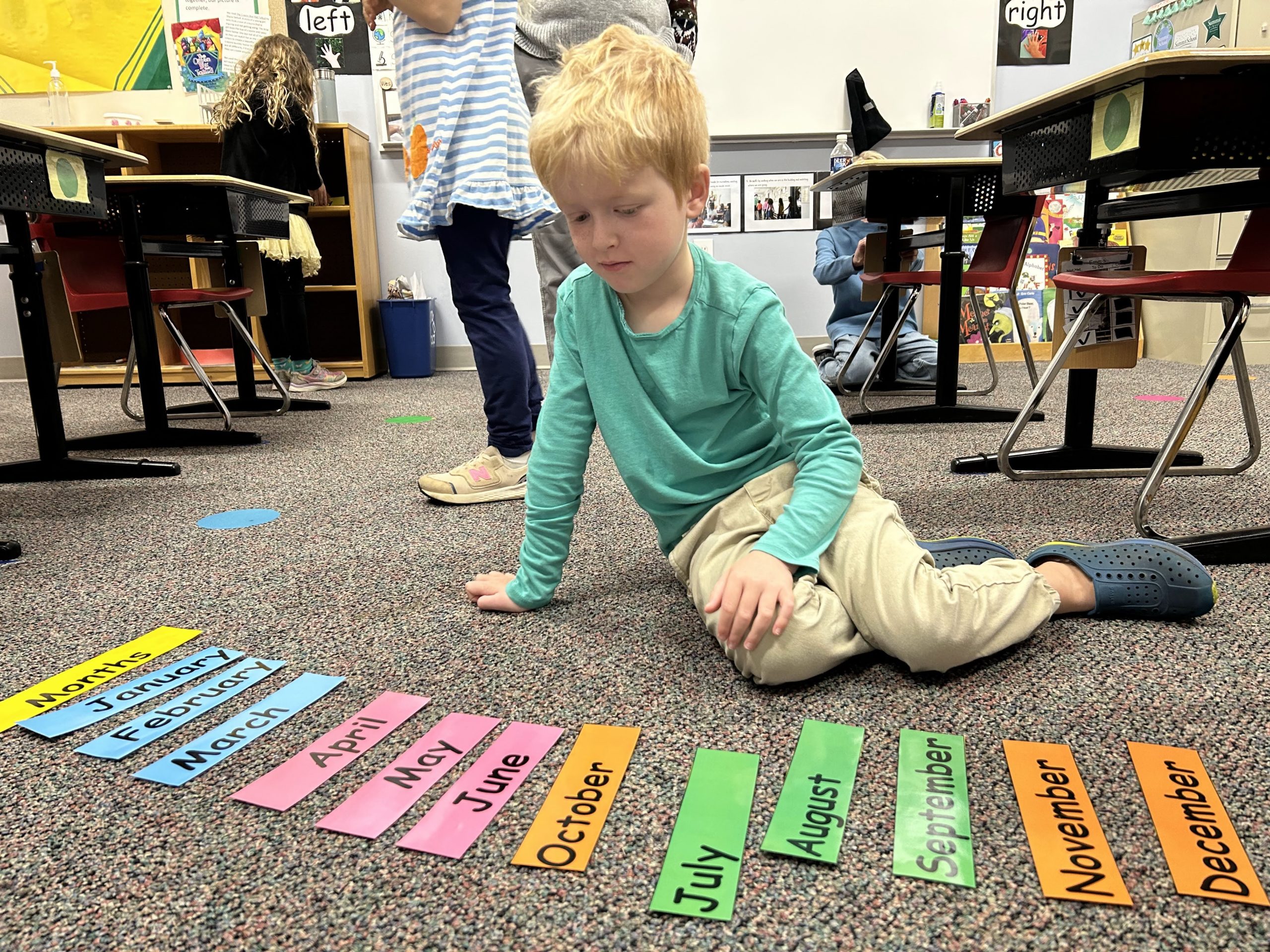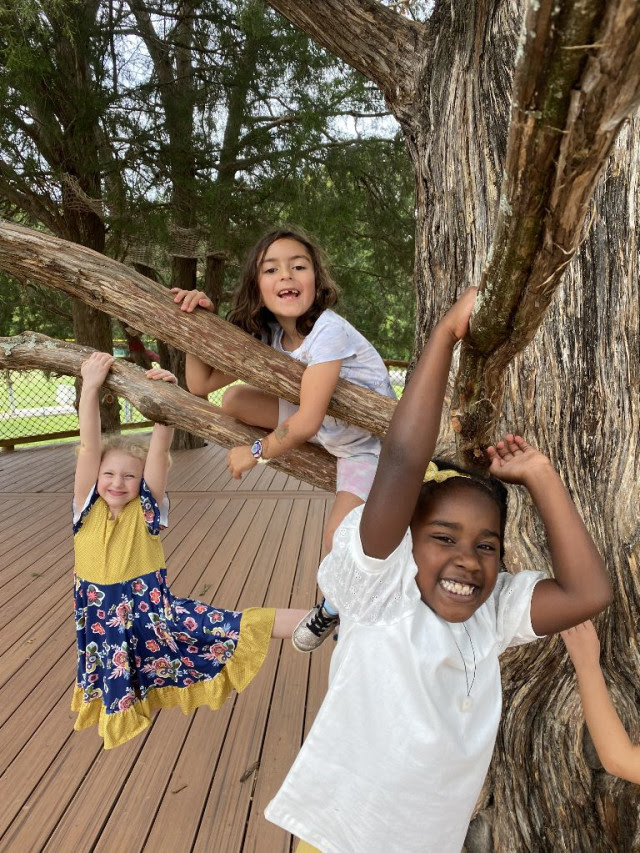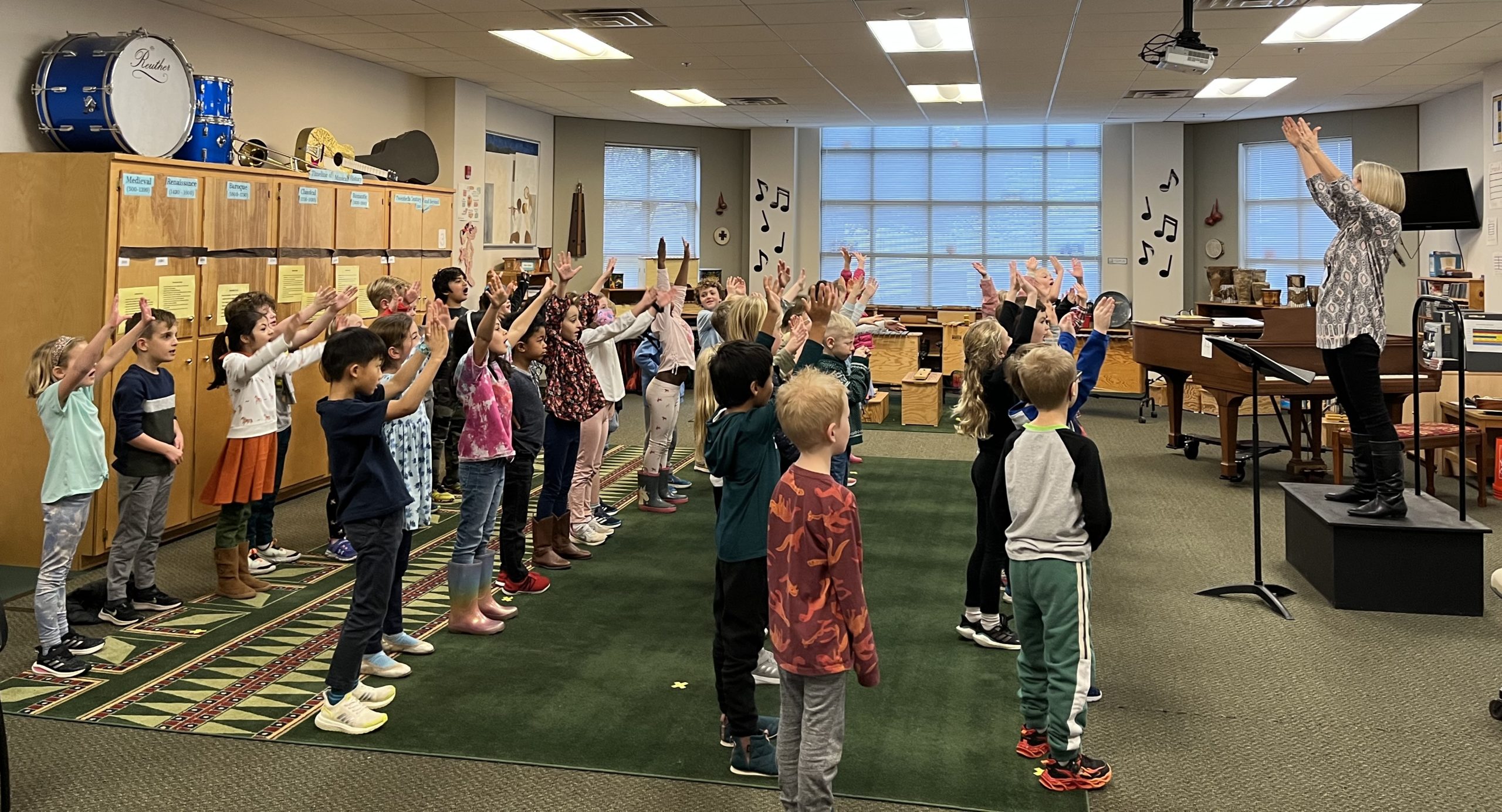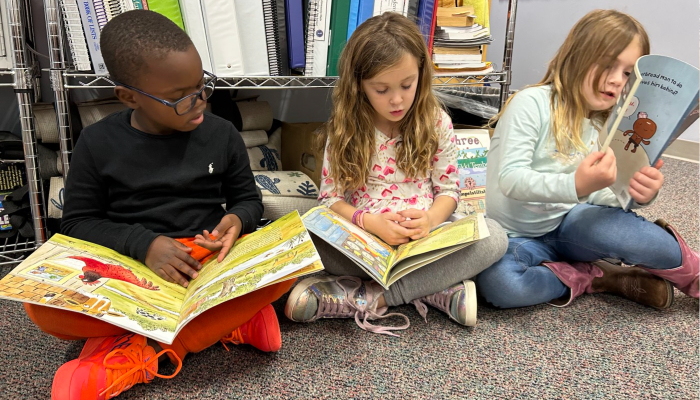By Della Hinman, Summit School
How many times in a day do you hear the question why? I’d wager to guess that if you are around young children, that number is high. Curiosity is one of childhood’s greatest gifts, even if the questions sometimes seem like they will never end. As an educator for over ten years, I have come to believe that establishing purpose and encouraging curiosity nurtures a child’s ability to answer some of those whys for themselves.
If you ask my kindergarteners why we are learning letters, sounds, and rhymes, they will tell you: “We are becoming strong readers!” This connection between the work we are doing to build a strong literacy foundation and the end goal of becoming joyful readers is a critical connection for young learners to make.
What does literacy instruction look like in an early childhood classroom?
So, how do we help young children lay a strong foundation for learning to read? Let’s examine the power of routines, play, and nurturing curiosity.

The Power of Routines
We know that children thrive within routine, so when children are building a strong literacy foundation, routines are powerful in supporting that learning. When children are learning to read, they are building new neural pathways. If that sounds like a lot of cognitive work, it is! Routines help alleviate some of that mental load, allowing students to focus on the new concepts they are learning and not just the delivery format.
In Early Childhood classrooms at Summit School, students use routines frequently in literacy instruction. One example is building phonological awareness, which is the ability to recognize and work with sounds in spoken language. Students know the format of each part of their lesson, as well as the accompanying hand motions to make that learning more kinesthetic. From rhymes to blending, phonological awareness is important for young children as they train their ears to the sounds around them.
Routines are also important in our phonics lessons, which include direct instruction in connecting letters to sounds in a system of print. When that instruction is delivered within a predictable routine, and adults consistently connect that back to our purpose of becoming strong readers, you have a winning combination!
The Power of Play
We know the power of inspiring wonder and delight in the learning opportunities we offer young children. Literacy instruction with young children should tap into the power of play by using games, big body movement, and enticing stories and characters that invite children into the joy of language and reading.
Several years ago, at a conference, I heard a Harvard educational researcher, Ben Mardell, say, “What is playful to some is not playful to all” and that impacted me. Every child’s learning journey is unique. Offering a wide range of choices and setting aside our own notions of what is and is not playful helps ensure each learner is offered opportunities to enjoy their journey to reading.

The Power of Nurturing Curiosity
Once we know how children learn to read and how to make it fun, the next step is to engage the natural curiosity of young children. So, back to all those whys. I believe engaging with our children in their sometimes-endless questions might just be the most important tool we have in supporting our young readers. Children need plentiful opportunities to learn about topics that capture their interest, build their vocabulary, and develop strong background knowledge that will directly correlate to their understanding of the words they eventually read on the page.
How can I support my child?
Here are a few tips to use outside the classroom to help your child as they develop a strong literacy foundation.
Embrace the journey.
Every child learns at a different pace. When we take off the pressure to get there first or faster, we give the gift of more enjoyment in the process.
Read aloud, read aloud, read aloud!
We can’t say this enough! And it shouldn’t stop when your child begins reading independently. Keep reading aloud to your child to develop their vocabulary and nurture the love of reading.
Celebrate a Culture of Reading.
When you model how you use and enjoy reading yourself, you are signaling to your child that reading is important. Talk about what you are reading, offer to come in to read to your child’s class, or point out the signs you use as you are driving.
Develop a Strong Partnership.
When teachers and families are in a strong partnership together, children benefit. Stay engaged with your child’s learning progress and ask questions.

Becoming Joyful Readers
It is a joy to support young children as they first begin unlocking the magical world of reading. It’s also one of the most important gifts we can give them. So the next time we hear why, let’s remember the powerful tools we have and embrace those questions from our future strong readers.
Sponsored by Summit School

















Della, my late friend Nina Weigl thought the world of you, and she would have loved your take on children an literacy ❤️